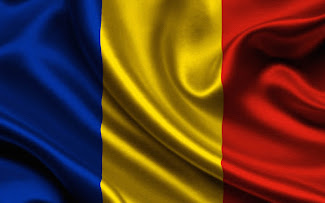
Romania, officially the Republic of Romania, is a country at the crossroads of Central, Eastern and Southeastern Europe, it has an area of 238,391 square kilometers. The capital and largest city is Bucharest. Romanian is its official language and Romanian Leu (RON) is the official currency. Sighişoara is one of the surviving medieval towns and there are many fortified churches and castles, particularly the cliff-top Bran Castle, which has long been associated with the legend of Dracula. The five countries bordering on land are Bulgaria, Hungary, Moldova, Serbia and Ukraine. The inhabitants or natives of this region are called Romanians.
Seven Romanian landmarks are declared UNESCO patrimony. These locations are the Danube Delta, the painted churches in the north of Moldavia, the Dacian Fortresses of the Orastie Mountains, the historic center of Sighisoara, the Horezu Monastery, the villages with the fortified churches in Transylvania, and the wooden churches in Maramures.
The Black Sea Coast in Romania occupies a little over 150 miles.
The highest wooden church globally and the second-largest wooden structure in Europe is Peri Monastery, located in Maramures, Romania. The church is 78 meters high, and it has a 7-meter-high cross.
Romania’s industries include petrochemical, chemical, metal processing, machine manufacturing, textiles, transport and industrial equipment, lumber and furniture.
Being the second-largest delta in Europe, after the one of the Volga River, the Danube Delta is the best-preserved in Europe. It has 3,540 square kilometers of rivers, canals, swamps, lakes, reed islands, and 23 natural ecosystems with unique flora and fauna.
Romania country produces natural gas, coal, petroleum, salt and iron ore as well.
Romania has more than 60% of the brown bear population in Europe.
The great majority of the population of Romania are Romanians, followed by Hungarians and a very small percentage (less than two percent) Vlax Romani or Roma (gypsies).
Tourists can also find the largest mammal in Europe – the bison.
The name Romania comes from the Latin word ‘Romanus’ or citizen of Rome, a legacy from the days when the Romans controlled ancient Dacia.
In the Carpathian Mountains, you can find the largest virgin forests in Europe.
Romanians are a poor people presently, with unemployment at 11 percent and their standard of living below that of most of Western Europe.
The Scarisoara Cave Glacier is the second-largest underground glacier in Europe. It is located at the foot of the Bihor Mountains, it has a volume of 75,000 cubic meters, and it is more than 3,500 years old.
The flag of Romania consists of blue, yellow and red vertical stripes. These stripes represent Transylvania, Moldavia and Walachia, the three historic components of the combined country of Romania.
Guinness Book has ranked the Palace of Parliament as the most expensive administrative building and the world’s heaviest one.
Transylvania (which means ‘land beyond the forest’) was the home of Vlad the Impaler who inspired Bram Stoker’s novel, “Dracula”.
Romania is ranked 13th in the world in terms of wine production.
Romania is situated halfway between the North Pole and the equator.
The movie “Cold Mountain,” starring Nicole Kidman, was filmed in Romania.
The capital of Romania is Bucharest, also spelled Bucuresti.
Romania is that it’s the wealthiest country in Europe in terms of gold resources.
In a very remote area in Romania’s Apuseni National Park, cave drawings were discovered that are around 32,000 years old.
The Astra Museum, located in Sibiu, is the second-largest open-air museum in the world.
The tallest rock sculpture in Europe is located in Romania. The statue of Dacian king Decebal is 135 feet tall and is carved in a rocky bank near the Danube.
In 2009 World Records Academy officially declared Luceafarul as the longest love poem in the world. It has 98 stanzas, and a Romanian poet, Mihai Eminescu, wrote it.
The world’s largest salt mine museum is in Transylvania inside the old Turda Salt Mines.
The oldest oven in the world was discovered in Campeni, Romania. It was established it has approximately 6,000 years.
Pele Castle was Europe’s first castle lit entirely by electrical current. The castle’s own plant produced the electricity. Still functional and used today, the castle’s central heating system was built in 1888.
In 1869, Timisoara, Romania, became the first European city to introduce a horse-drawn tram.
In 1986, Steaua Bucureşti (Bucharest’s soccer team) won the European Cup. They are the only team from a Communist country to ever do so.
Timisoara became the first city in Europe to introduce street lighting.
The second largest building in the world is the Romanian Palace of Parliament. It is second only to the Pentagon in the United States.
The city of Brasov, Romania, has the third narrowest street in Europe, after Spreuerhofstraße in Germany and Parliament Street in England. Its width varies between 1.11 and 1.35 meters, and it is 80 meters long.
Bucharest is home to thousands of stray dogs. Approximately 10,000 people are bitten by these abandoned dogs every year.
Brasov also has the largest church in Romania, called the Black Church with a length of more than 89 meters. The church also has the largest organ in Europe (it has 4,000 tubes) and the heaviest bell in Romania.








